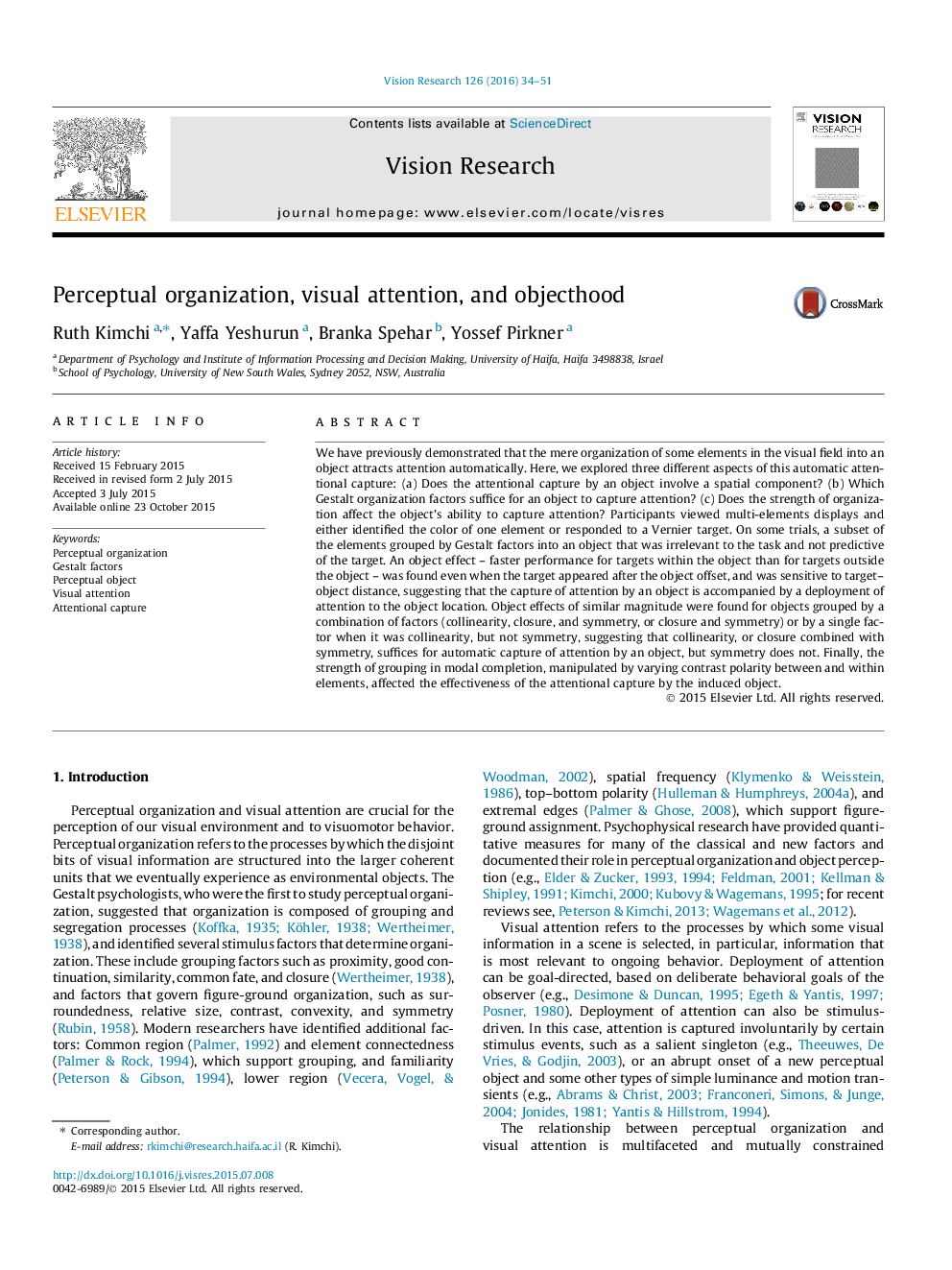| Article ID | Journal | Published Year | Pages | File Type |
|---|---|---|---|---|
| 6202898 | Vision Research | 2016 | 18 Pages |
â¢A perceptual object captures attention automatically.â¢It is accompanied by deployment of attention to the object location.â¢Collinearity or closure, but not symmetry, suffices for attentional capture by an object.â¢The strength of perceptual organization influences this attentional capture.
We have previously demonstrated that the mere organization of some elements in the visual field into an object attracts attention automatically. Here, we explored three different aspects of this automatic attentional capture: (a) Does the attentional capture by an object involve a spatial component? (b) Which Gestalt organization factors suffice for an object to capture attention? (c) Does the strength of organization affect the object's ability to capture attention? Participants viewed multi-elements displays and either identified the color of one element or responded to a Vernier target. On some trials, a subset of the elements grouped by Gestalt factors into an object that was irrelevant to the task and not predictive of the target. An object effect - faster performance for targets within the object than for targets outside the object - was found even when the target appeared after the object offset, and was sensitive to target-object distance, suggesting that the capture of attention by an object is accompanied by a deployment of attention to the object location. Object effects of similar magnitude were found for objects grouped by a combination of factors (collinearity, closure, and symmetry, or closure and symmetry) or by a single factor when it was collinearity, but not symmetry, suggesting that collinearity, or closure combined with symmetry, suffices for automatic capture of attention by an object, but symmetry does not. Finally, the strength of grouping in modal completion, manipulated by varying contrast polarity between and within elements, affected the effectiveness of the attentional capture by the induced object.
